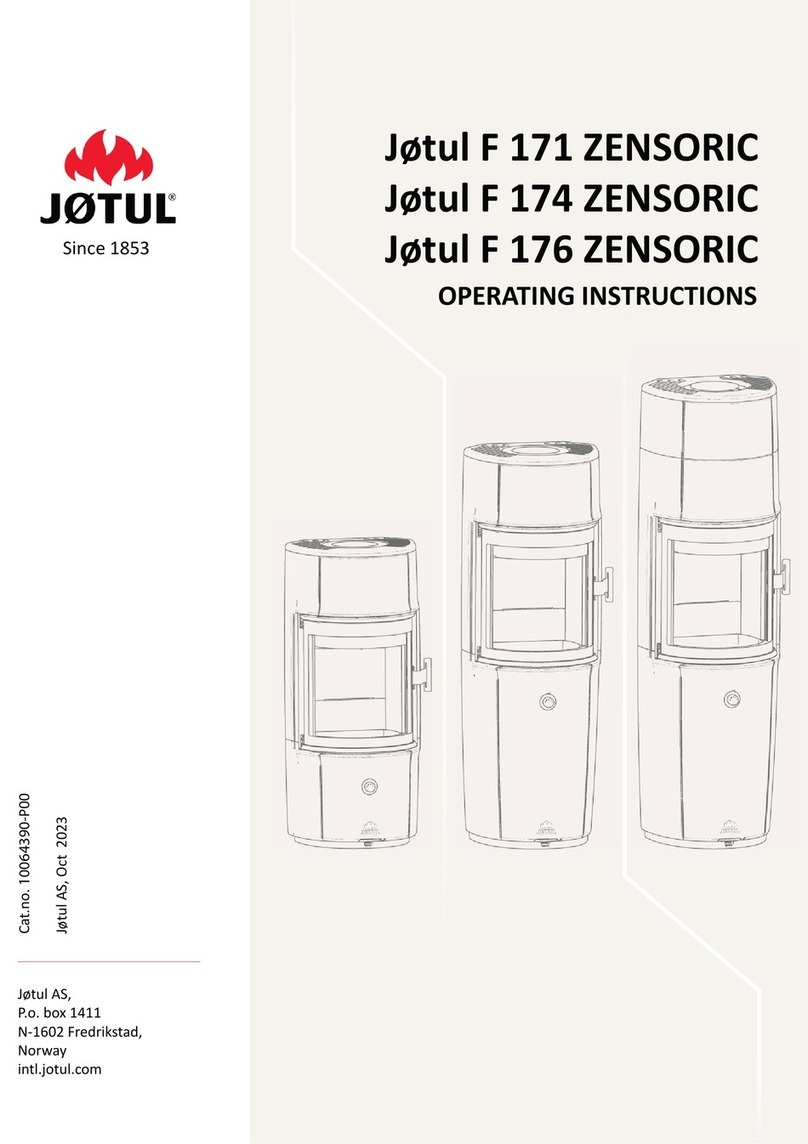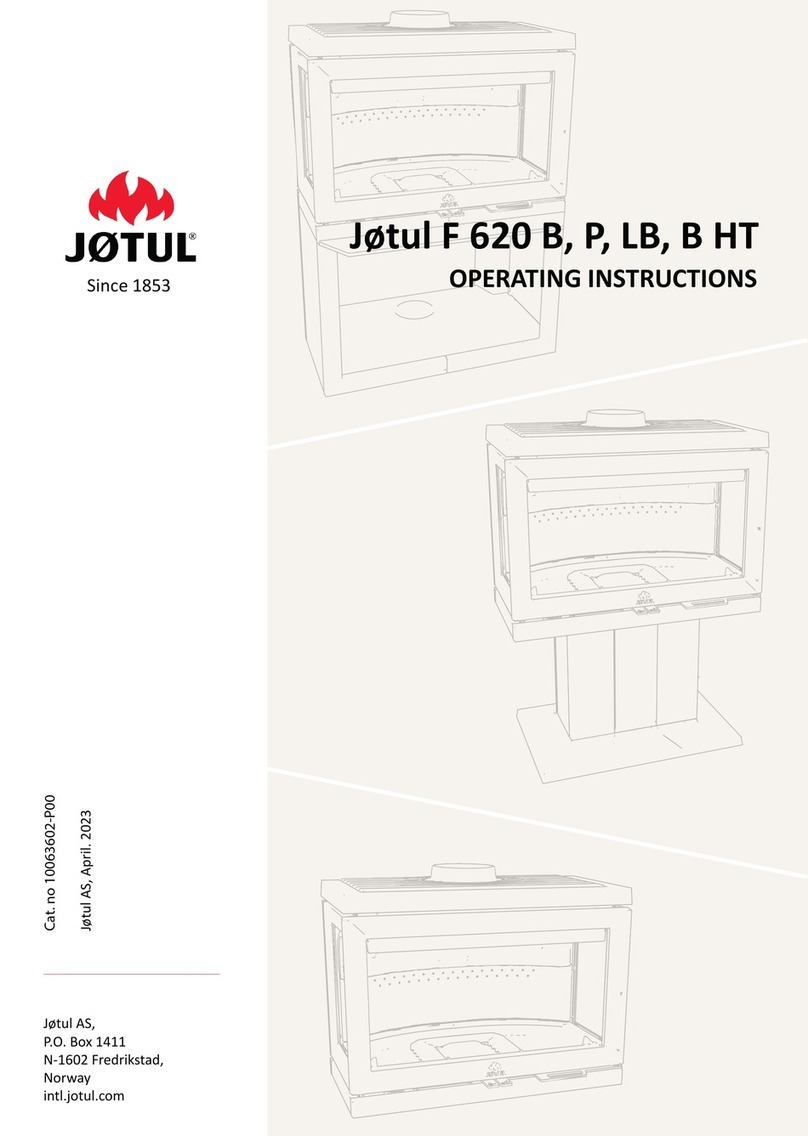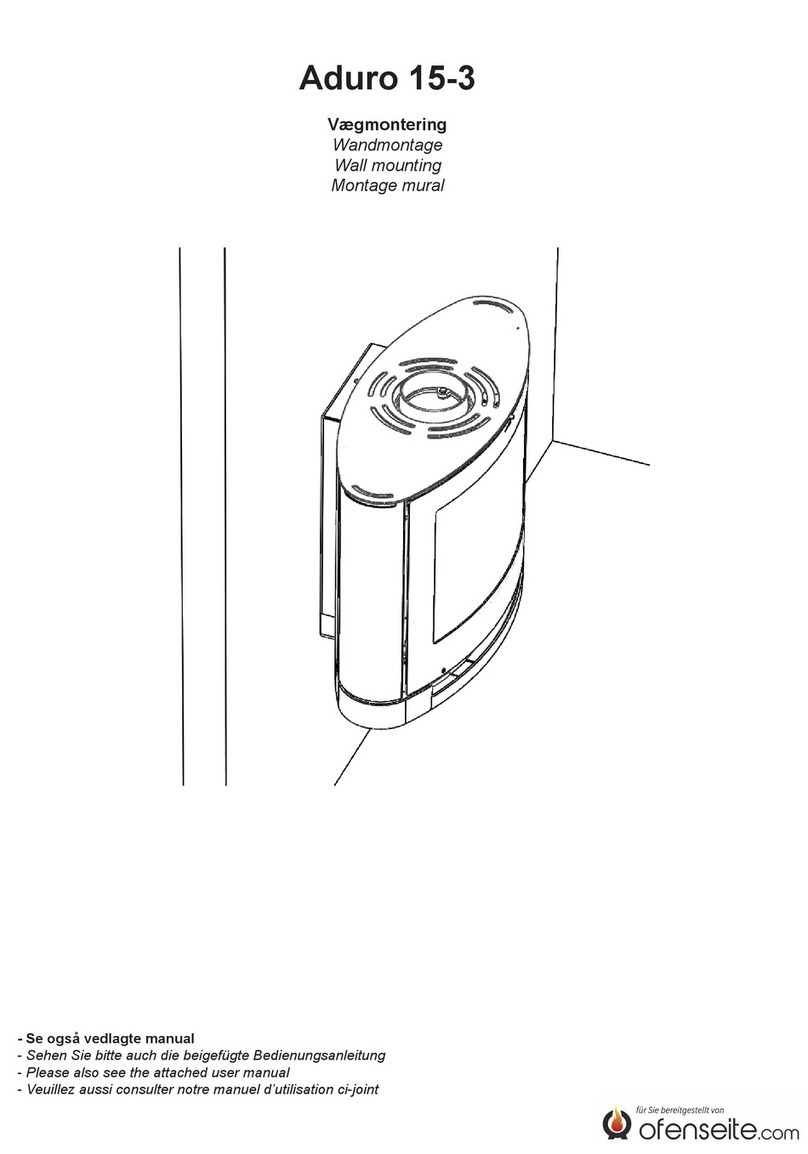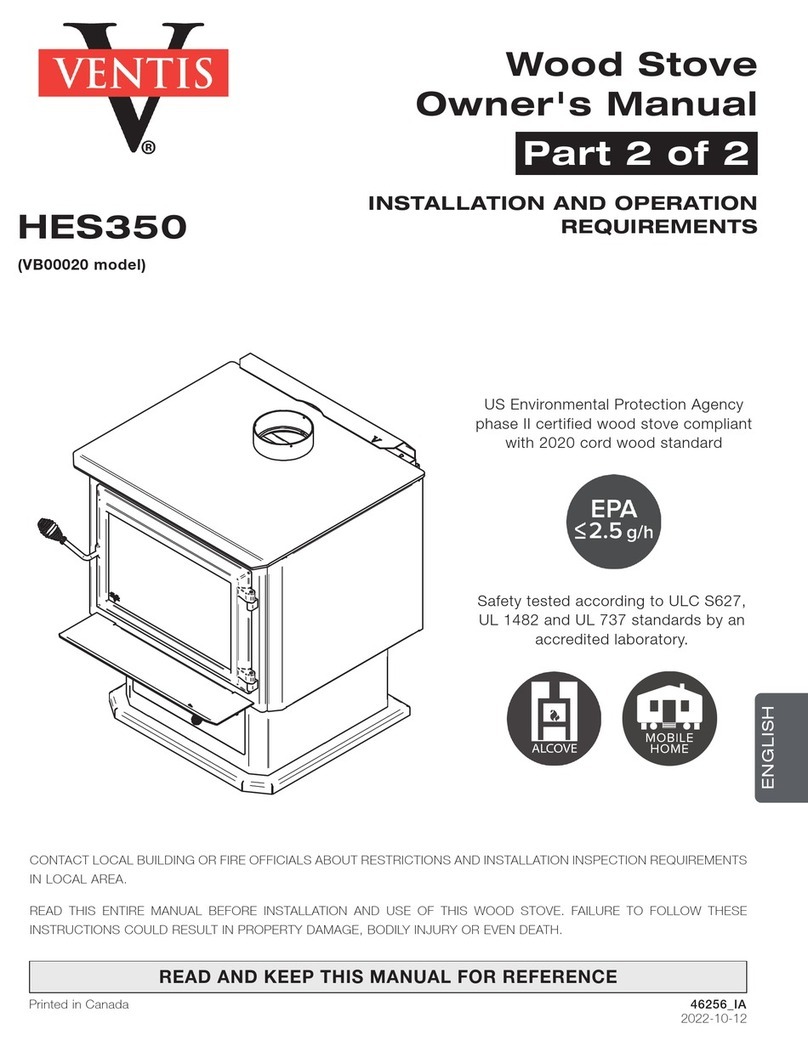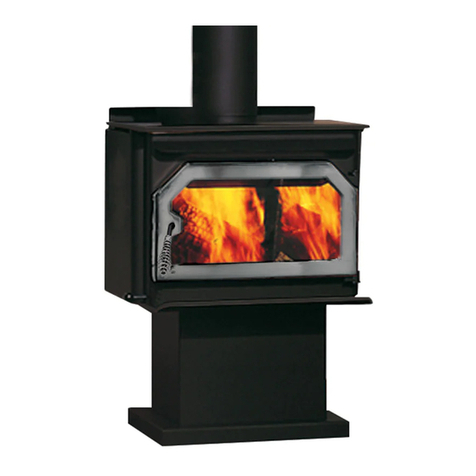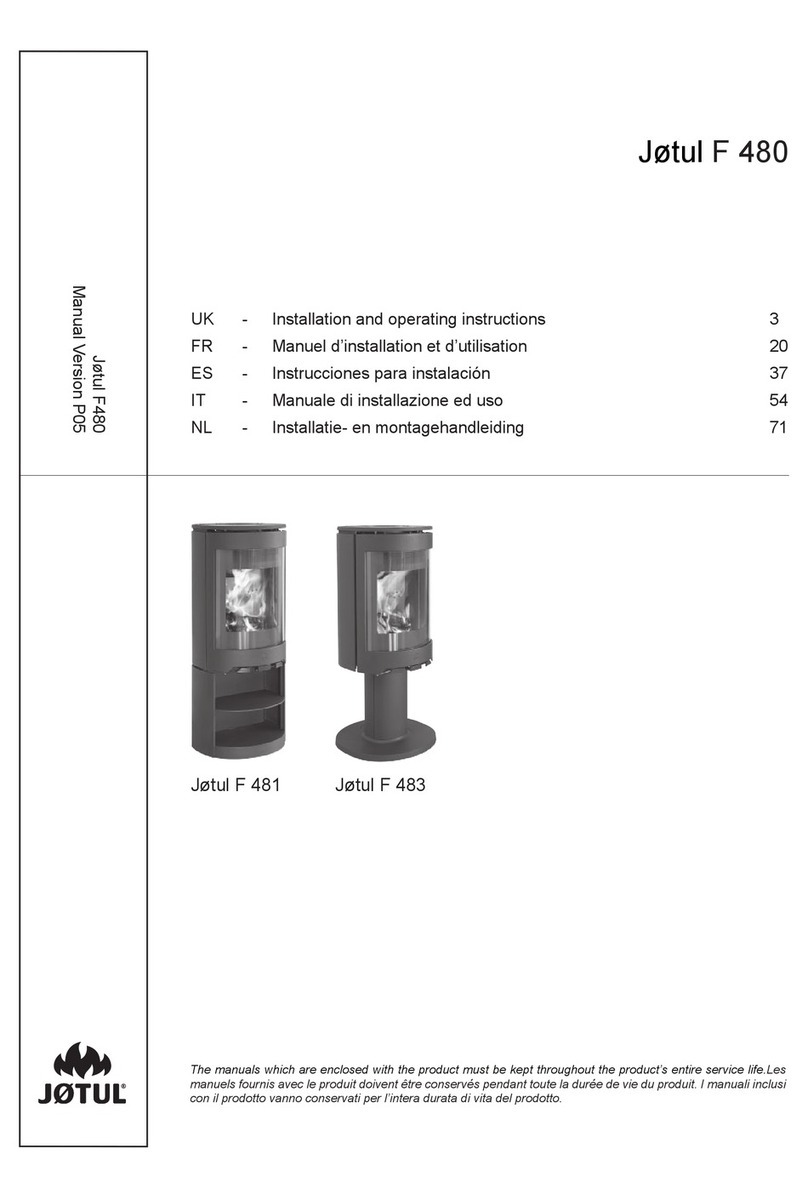5
Safety Notices
• Burn solid wood fuel only
• Do not use chemicals or fluids to start the fire. Do not
burn garbage or flammable fluids.
• If this room heater is not properly installed, a house
fire may result. To reduce the risk of fire, follow
the installation instructions. Failure to follow these
instructions may result in property damage, bodily
injury, or loss of life.
• Contact the local building or fire officials about
restrictions and installation inspection requirements
in your area.
• Do not connect this stove to any air distribution duct
or system.
• Extremely hot while in operation! Keep children,
clothing and furniture away. Contact will cause skin
burns.
• Install smoke detectors in the living areas and bedrooms
of your home. Test them regularly and install new
batteries twice annually.
When installed in the same room as the stove, a smoke
detector should be located as far from the stove as
possible to prevent it from sounding when adding fuel
to the fire.
• Avoid creating a low pressure condition in the room
where the stove is operating. Be aware that operation
of an exhaust fan or clothes dryer can create a low
pressure area and consequently promote flow reversal
through the stove and chimney system. The chimney
and building, however, always work together as a
system - provision of outside air, directly or indirectly
to an atmospherically vented appliance will not
guarantee proper chimney performance. Consult
your local Jøtul authorized dealer regarding specific
installation/performance issues.
• Jøtul recommends that this stove be installed by a
professional solid fuel technician or that you consult
one if you do the work yourself. Also, consult your
insurance company regarding any other specific
requirements.
USA/Canada
1.0 Installation
If this solid fuel room heater is not properly installed,
a house fire may result. For your safety, follow the
installation directions. Contact the local building or fire
officials about restrictions and installation inspection
requirements in your area.
Your local officials have final authority in determining if
a proposed installation is acceptable. Any requirement
by the local authority having jurisdiction that is not
specifically addressed in this manual,defaults to NFPA 211,
and local codes in the U.S. or in Canada, CAN/CSA-B365-M
and local codes.
1.1 Assembly Before Installation
Unpack the Stove
Inspect the stove for damage. Contact your dealer
immediately if any damage is found. Do not install the
stove if any damage is evident.
Contents:
• 6” Pipe Adaptor
• Door Handle Knob and hardware
• Air Control Knob
• Pipe Adaptor Screws, M6x16 Hex Hd (2)
• 3 mm hex key
1.2 Flue Collar Installation
The Flue Collar is oriented in the Rear Exit position.
Follow this procedure to change the collar to a Top Exit or
Side Exit position if appropriate. You will need a 10 mm
open end wrench or socket wrench.
1. Reach through the flue collar opening and remove the
two 10 mm bolts that secure it to the rear panel.
2. Remove the two 10 mm bolts that secure the Cover
Plate to either the Top or Side Plate as desired.
3. Re-install the Flue Collar on the appropriate position
and attach the Cover Plate to the rear panel using the
screws previously removed.
1.3 Remove Air Control Limit Bolt
Remove the 10mm Air Control Limit bolt from the bottom of
the stove as shown in fig. 1. This bolt is not required in
the U.S. and Canada. See also pages 14-15, Section 5.3 for
further information.
Fig. 1 Back of the stove
Remove Air
Control Limit
Bolt
Air Shutter Plate










